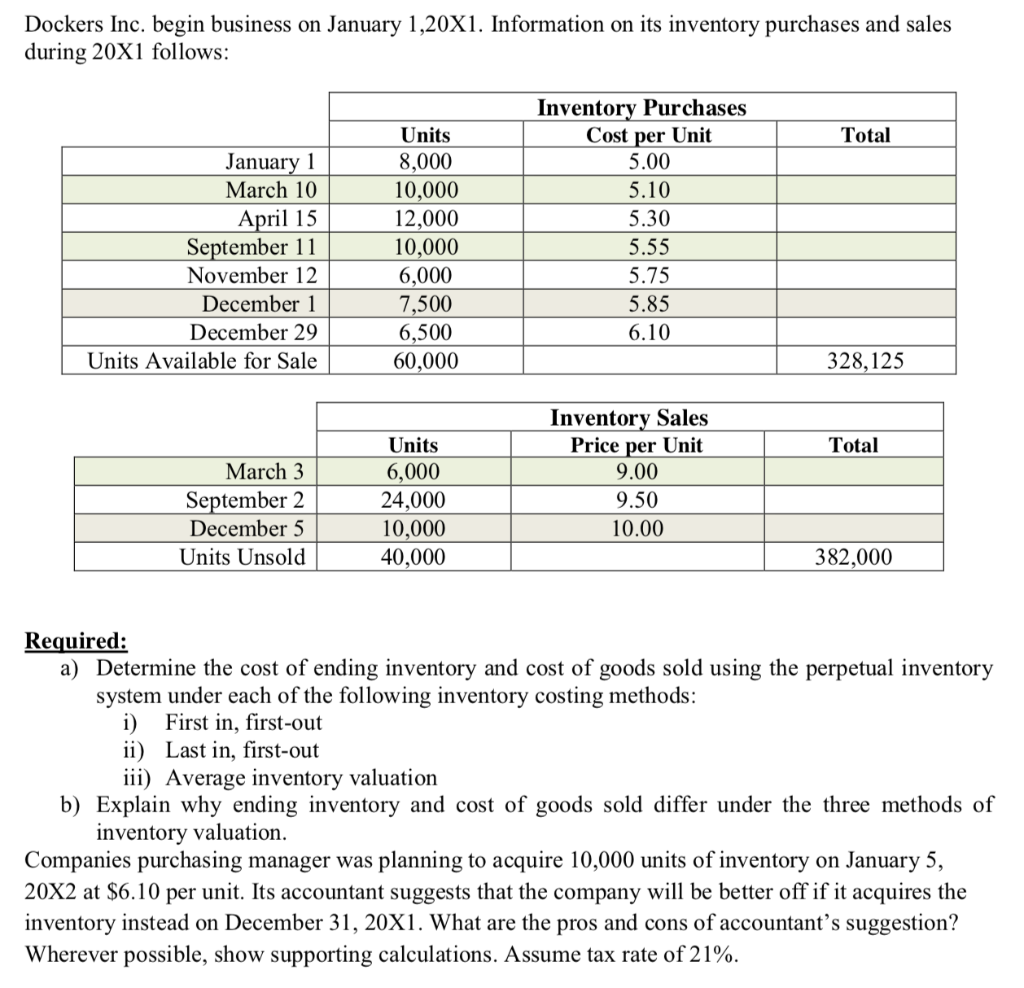
Dockers Inc. begin business on January 1,20X1. Information on its inventory purchases and sales during 20x1 follows: Total January 1 March 10 April 15 September 11 November 12 December 1 December 29 Units Available for Sale Units 8,000 10,000 12,000 10,000 6,000 7,500 6,500 60,000 Inventory Purchases Cost per Unit 5.00 5.10 5.30 5.55 5.75 5.85 6.10 328,125 Total March 3 September 2 December 5 Units Unsold Units 6,000 24,000 10,000 40,000 Inventory Sales Price per Unit 9.00 9.50 10.00 382,000 Required: a) Determine the cost of ending inventory and cost of goods sold using the perpetual inventory system under each of the following inventory costing methods: i) First in, first-out ii) Last in, first-out iii) Average inventory valuation b) Explain why ending inventory and cost of goods sold differ under the three methods of inventory valuation. Companies purchasing manager was planning to acquire 10,000 units of inventory on January 5, 20X2 at $6.10 per unit. Its accountant suggests that the company will be better off if it acquires the inventory instead on December 31, 20X1. What are the pros and cons of accountant's suggestion? Wherever possible, show supporting calculations. Assume tax rate of 21%. Dockers Inc. begin business on January 1,20X1. Information on its inventory purchases and sales during 20x1 follows: Total January 1 March 10 April 15 September 11 November 12 December 1 December 29 Units Available for Sale Units 8,000 10,000 12,000 10,000 6,000 7,500 6,500 60,000 Inventory Purchases Cost per Unit 5.00 5.10 5.30 5.55 5.75 5.85 6.10 328,125 Total March 3 September 2 December 5 Units Unsold Units 6,000 24,000 10,000 40,000 Inventory Sales Price per Unit 9.00 9.50 10.00 382,000 Required: a) Determine the cost of ending inventory and cost of goods sold using the perpetual inventory system under each of the following inventory costing methods: i) First in, first-out ii) Last in, first-out iii) Average inventory valuation b) Explain why ending inventory and cost of goods sold differ under the three methods of inventory valuation. Companies purchasing manager was planning to acquire 10,000 units of inventory on January 5, 20X2 at $6.10 per unit. Its accountant suggests that the company will be better off if it acquires the inventory instead on December 31, 20X1. What are the pros and cons of accountant's suggestion? Wherever possible, show supporting calculations. Assume tax rate of 21%







